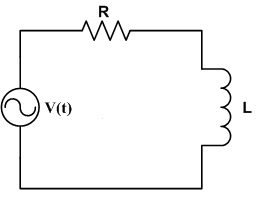Matthew's Asgn: Difference between revisions
Jump to navigation
Jump to search
Btheredude (talk | contribs) No edit summary |
Btheredude (talk | contribs) No edit summary |
||
| Line 38: | Line 38: | ||
<math>\ \dfrac{s}{(s^2+w^2)(R+Ls)} = \dfrac{A}{(s+jw)} + \dfrac{A*}{(s-jw)} + \dfrac{B}{(Ls+R)} \,\!</math> |
<math>\ \dfrac{s}{(s^2+w^2)(R+Ls)} = \dfrac{A}{(s+jw)} + \dfrac{A*}{(s-jw)} + \dfrac{B}{(Ls+R)} \,\!</math> |
||
<math>\ \dfrac{s/L}{(s^2+w^2)(R/L+s)} = \ |
<math>\ \dfrac{s/L}{(s^2+w^2)(R/L+s)} = \dfrac{A(s+jw)(s+R/L)}{(s+R/L)(s^2+w^2)} + \dfrac{A*(s+jw)(s+R/L)}{(s^2+w^2)(s+R/L)} + \dfrac{B(s^2+w^2)}{(s+R/L)(s^2+w^2)} \,\!</math> |
||
<math>\ |
<math> \dfrac{S}{L} = A(s-jw)(s+R/L) + A*((s+jw)(s+R/L)) + B(s^2+w^2) \,\!</math> |
||
= A(s^2-jws+R/Ls-jwR/L) + a*(s^2+jws+R/L+jwr/L) + B(s^2+w^2) \,\!</math> |
<math> = A(s^2-jws+R/Ls-jwR/L) + a*(s^2+jws+R/L+jwr/L) + B(s^2+w^2) \,\!</math> |
||
Revision as of 16:56, 1 November 2010
I decided that I would attempt to perform a simple analysis of a series RL circuit, which could then be used to do a more complex analysis on a basic transformer. I have always had interest in electronics, and transformers are key to basic electronics.
I decided that i would do the analysis of a RL circuit with the variables instead of given values.
Given:
V(t)=
V(s)=
I(0)=i
The Laplace transform for an inductor:
=
The Laplace transform for a resistor:
=
Therefore the Resulting Equation for the system after applying the Laplace Transform:
A series of algebraic manipulations follows to come up with I(s):
We can then use partial fraction manipulation to expand the expression:












